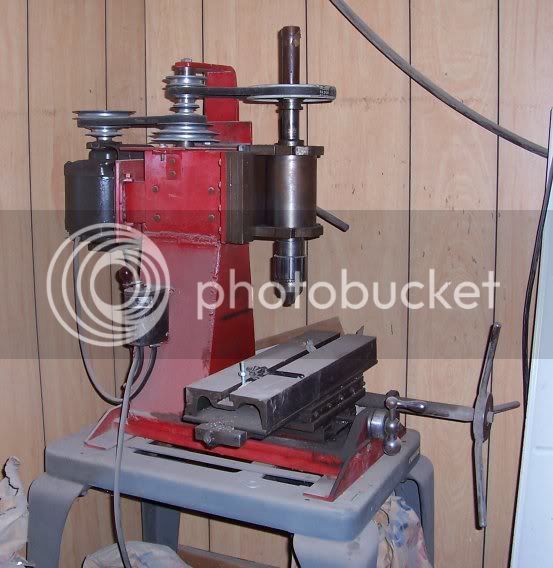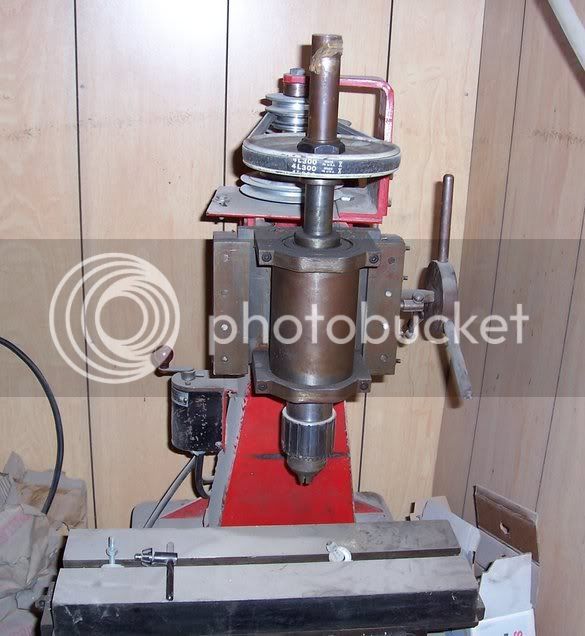mattybok,
the fact that "light milling' is even actually doable with a drill press conversion is a mute point for all practicle purposes in gunsmithing. the majority of the "milling i do with my drillpress is free hand where i'm not actually trying for a precise fit, but just making small sawn pieces flat and straight so they look somewhat professional... the actual size they end up is not all that important, so a controled, precise cut isn't necessary...basicly just the opposite of what you would need a mill for in gunsmithing. with my set up, i can make end cuts of .010" or so, comfortably in brass and aluminum, maybe a bit more and i limit side cuts to just cleaning up saw marks and straightening out edges in up to 1/2" stock. the other factor is that with a drillpress converion, unless you go to the trouble of indicating quill travel, you have no precise method od controlling cut depth even remotely close to what is required to doo decent mill-work.
the point is that there is very little brass and alum used in guns other than a little brass on muzzle guns, which are the smallest proportion of gun work as it is. in any steel, which is far and away the most used, there is just no way a drillpress is going to be rigid enough to do any cutting at all... not even a few thousandths per pass....even the lower priced small knee-mills from enco and others that are bridgeport spin-offs, will exibit some flex at times.
a lathe is much more usable and needed for general gun work and in a pinch, it will work as a mill, but set up is extremely time consuming even for a simple, short, straight edge cut or plunge cut. because you don't have movement in both x and y planes.
you will find that a lathe is the better money spent and that the milling can be gotten around for a long time untill you get to the point that you are actually "making" allot of speacialty parts. by then, if you get that far into the trade, you will be able to justify the cost of a mill and the tooling needed.
i would say, and i'm quite sure everyone here will agree, that the biggest reason most guys don't succeed is that they dive in and think they need to have all the high dollar equipment right off the bat, then find out buisiness volume can't pay for it. that buddy of mine that is a gunsmith is 61 yrs. old and i've known him for about 25 yrs, now. i remember that he got his mill a couple years after i met him.... and he has about a 1-1/2 year back-log on builds and stocking. now....do the math. :wink:
the fact that "light milling' is even actually doable with a drill press conversion is a mute point for all practicle purposes in gunsmithing. the majority of the "milling i do with my drillpress is free hand where i'm not actually trying for a precise fit, but just making small sawn pieces flat and straight so they look somewhat professional... the actual size they end up is not all that important, so a controled, precise cut isn't necessary...basicly just the opposite of what you would need a mill for in gunsmithing. with my set up, i can make end cuts of .010" or so, comfortably in brass and aluminum, maybe a bit more and i limit side cuts to just cleaning up saw marks and straightening out edges in up to 1/2" stock. the other factor is that with a drillpress converion, unless you go to the trouble of indicating quill travel, you have no precise method od controlling cut depth even remotely close to what is required to doo decent mill-work.
the point is that there is very little brass and alum used in guns other than a little brass on muzzle guns, which are the smallest proportion of gun work as it is. in any steel, which is far and away the most used, there is just no way a drillpress is going to be rigid enough to do any cutting at all... not even a few thousandths per pass....even the lower priced small knee-mills from enco and others that are bridgeport spin-offs, will exibit some flex at times.
a lathe is much more usable and needed for general gun work and in a pinch, it will work as a mill, but set up is extremely time consuming even for a simple, short, straight edge cut or plunge cut. because you don't have movement in both x and y planes.
you will find that a lathe is the better money spent and that the milling can be gotten around for a long time untill you get to the point that you are actually "making" allot of speacialty parts. by then, if you get that far into the trade, you will be able to justify the cost of a mill and the tooling needed.
i would say, and i'm quite sure everyone here will agree, that the biggest reason most guys don't succeed is that they dive in and think they need to have all the high dollar equipment right off the bat, then find out buisiness volume can't pay for it. that buddy of mine that is a gunsmith is 61 yrs. old and i've known him for about 25 yrs, now. i remember that he got his mill a couple years after i met him.... and he has about a 1-1/2 year back-log on builds and stocking. now....do the math. :wink:






